Overview of the 7 Wonders
The seven wonders of the ancient world were a collection of architectural feats accomplished by mankind during ancient times. These wonders were found all over the known world in countries like present-day Turkey, Egypt, and Greece. Many details of the ancient wonders remain a mystery to scholars today. However, most experts have a solid understanding of these ancient structures and what they represented among different people groups.
Great Pyramid of Giza
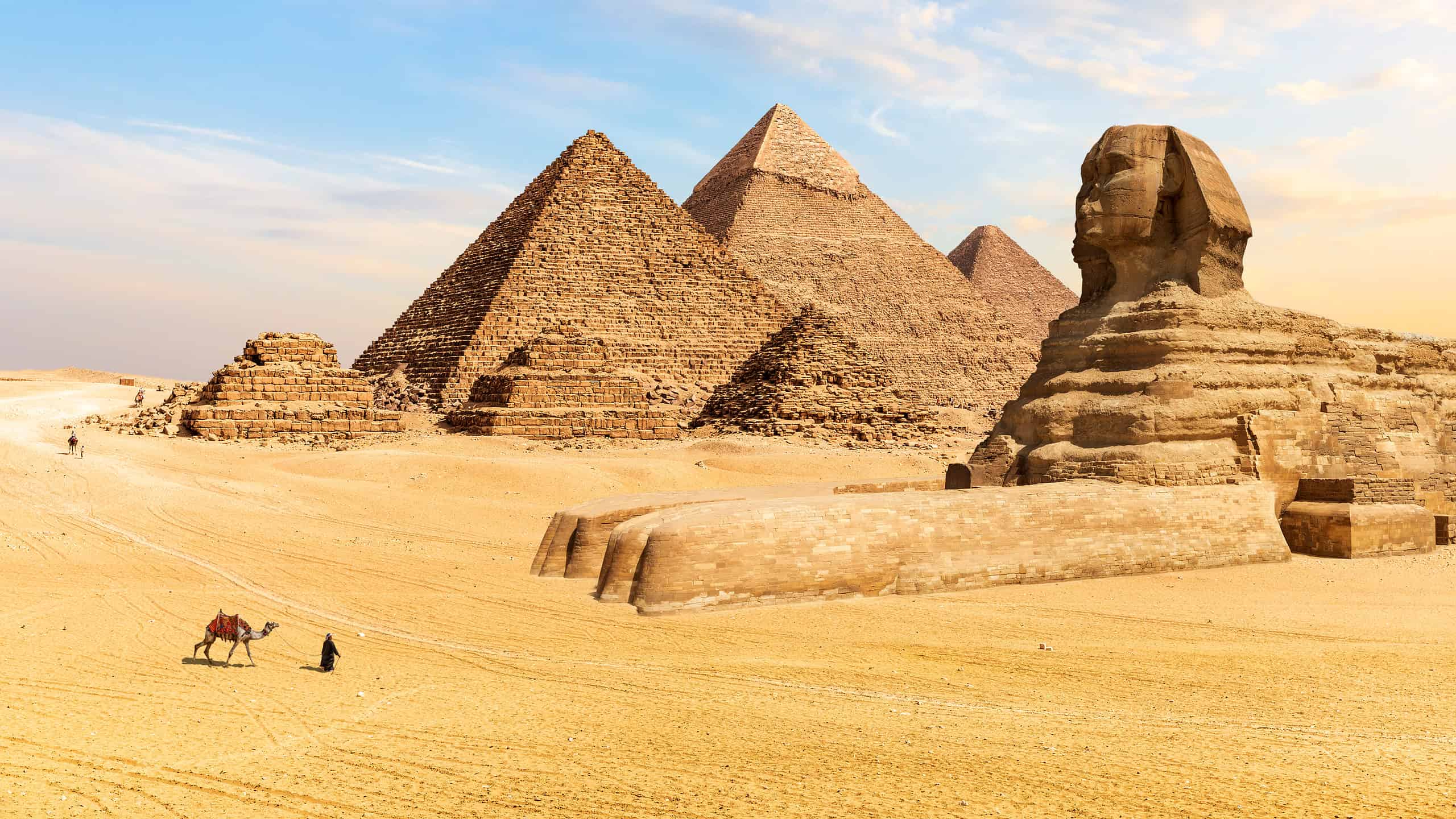
The Great Pyramid of Giza is the largest of the three pyramids of Giza.
©AlexAnton/Shutterstock.com
The Great Pyramid of Giza is likely the most recognizable wonder of the ancient world, as the pyramid still stands today. It was constructed around 2560 B.C., and it remained the tallest man-made structure on Earth for almost 4,000 years. Additionally, the Great Pyramid of Giza is also called Khufu because it serves as the tomb of the Pharoah Khufu. In fact, all three pyramids at Giza are tombs for pharaohs passed.
The Great Pyramid of Giza is the largest of the three pyramids at Giza. Each side of this incredible structure measures around 755 feet in length at its base. The original height of the pyramid measured approximately 481.4 feet tall. Due to wear and erosion, the pyramid stands at about 451 feet tall today. Overall, the Great Pyramid of Giza is a colossal structure, representing the ancient Egyptian’s glorification of the afterlife.
Hanging Gardens of Babylon
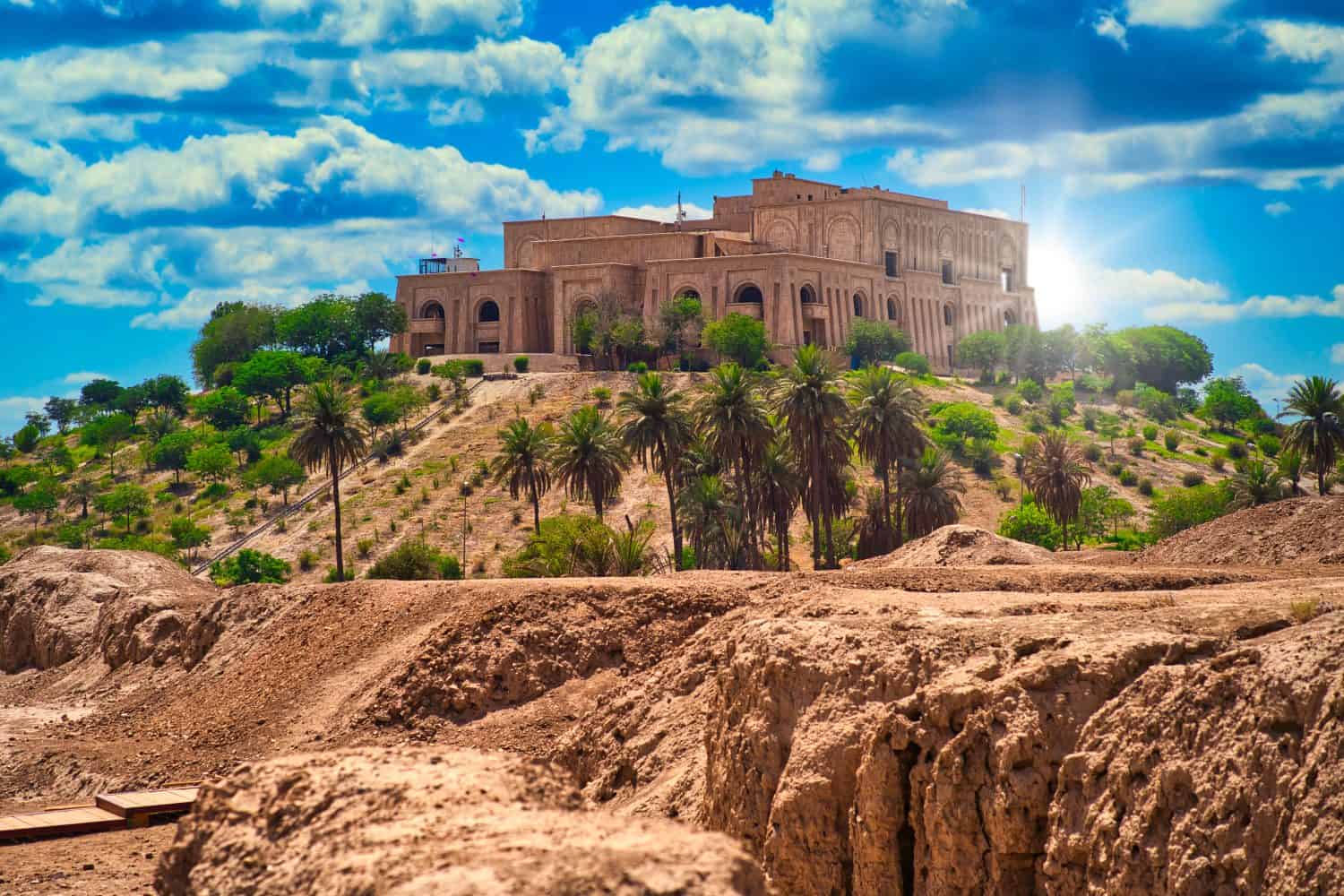
Scholars are unsure whether the Hanging Gardens of Babylon ever existed.
©Satar Aljanabi/Shutterstock.com
The Hanging Gardens of Babylon was an impressive feat of horticulture constructed near Babylon’s royal palace. The gardens are said to have hung from a type of tiered structure, though experts are unsure of the exact architectural details. Additionally, scholars aren’t positive that the Hanging Gardens of Babylon existed, and only some records indicate that they were ever built.
Despite these doubts, theories and rumors of the Hanging Gardens have prevailed. For one, some believe that the gardens were a series of rooftop gardens. Others contested that the Hanging Gardens were built within the palace of Babylon. Some claimed that the gardens were planted on the terraces of a ziggurat. Nevertheless, arguments over what the Hanging Gardens of Babylon looked like have not quelled the interest of ancient scholars seeking more information about this wonder of the world.
Statue of Zeus
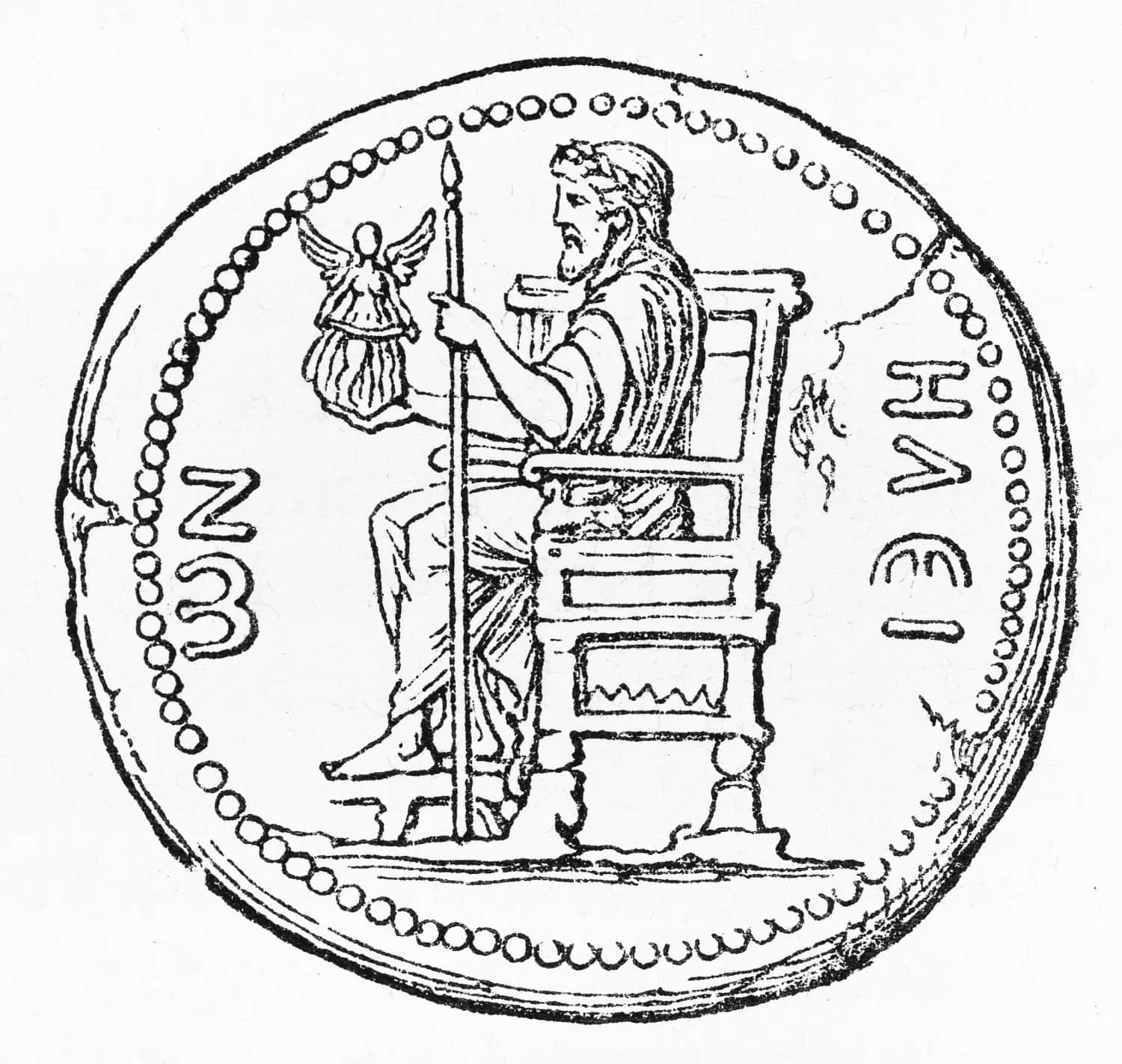
The Statue of Zeus at Olympia included the goddess Nike in his right hand.
©Nicku/Shutterstock.com
The Statue of Zeus at Olympia was a massive sculpture of the Greek god Zeus. Zeus was the king of all the Greek gods and the god of the sky, thunder, and lightning. Sculptor Phidias created the massive statue of Zeus, which measured 40 feet tall. The statue was plated with ivory and gold and included other prominent mythological figures. For instance, the goddess Nike was positioned in Zeus’s right hand. In his left hand sat an eagle.
Unfortunately, the statue was destroyed between 426 and 522 A.D., several hundred years after its creation in 430 B.C. The statue was likely destroyed in one of two ways: a series of earthquakes that demolished the temple in Olympia or a horrific fire at Constantinople, after it had been transferred there by the Romans.
Temple of Artemis

Few remains of the Temple of Artemis survive today.
©NiglayNik/Shutterstock.com
The Temple of Artemis is located at Ephesus in west Turkey. The temple was constructed around 550 B.C. by the king of Lydia, called Croesus, and rebuilt in 356 B.C. The Temple of Artemis was a huge and imposing structure, covering approximately 67,860 square feet. Additionally, the temple’s many columns measured around 60 feet tall.
The structure was one of the most impressive architectural feats known to man, especially during ancient times. Unfortunately, the temple was mostly destroyed by a people group called the Goths in 262 A.D. Today, few remains of the temple survive, with some at the site and others kept across the world in locations like the British Museum.
Mausoleum of Halicarnassus
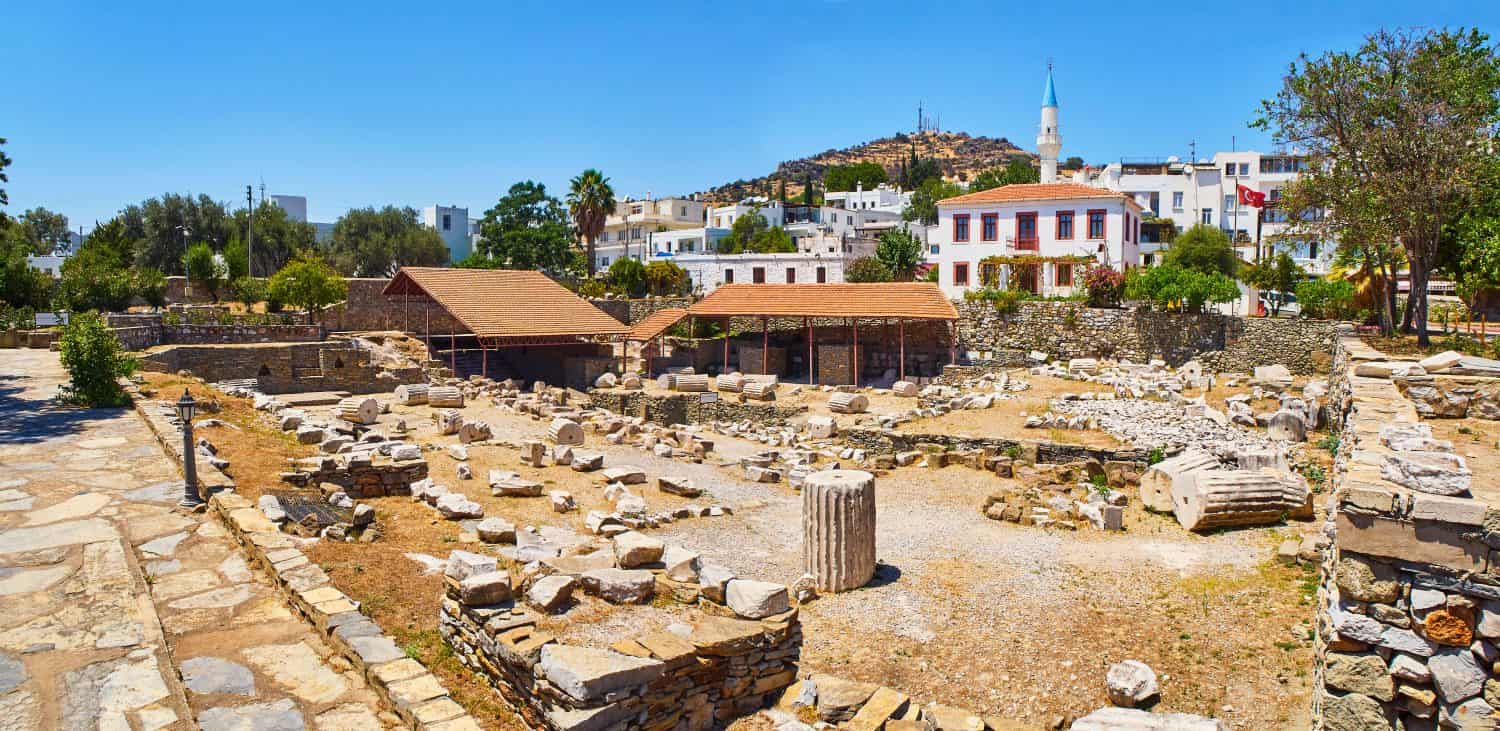
Certain remains of the Mausoleum of Halicarnassus reside at the structure’s original site.
©Alvaro German Vilela/Shutterstock.com
The Mausoleum of Halicarnassus, like the Great Pyramid of Giza, also functioned as a tomb. The approximately 148-foot-high structure served as the tomb of Mausolus, ruler of Caria. In fact, the term “mausoleum” derives from the tomb of Mausolus. Halicarnassus was the capital city of Caria, located on the southwestern tip of present-day Turkey.
The Mausoleum of Halicarnassus claimed a periphery of around 411 feet. Additionally, the structure featured 36 columns, which supported a pyramid-shaped roof. The roof showcased a sculpture of a chariot with four horses. Other sculptures produced by four Greek artists were also visible on the sides of the mausoleum. Like the Temple of Artemis, certain remains of the Mausoleum of Halicarnassus reside at the site, while others are kept at the British Museum.
Colossus of Rhodes

The image of the straddling Colossus of Rhodes became popular during the Middle Ages.
The Colossus of Rhodes was a huge statue of the Greek god Helios, god of the Sun. The statue was constructed from bronze and iron in the ancient city of Rhodes. It stood about 105 feet high along Mandrákion Harbor, a nearby waterway by which many ships passed through the city.
While some have speculated that the statue straddled the harbor’s entrance with its two legs, this assumption is incorrect. The image of the straddling Colossus of Rhodes derives from the Middle Ages, which occurred long after the statue’s construction between 294 and 282 B.C. Additionally, some scholars claim that it would have been impossible to sculpt the Colossus of Rhodes straddling the harbor. Considering the magnificence of other ancient wonders of the world, though, it wouldn’t be surprising if ancient peoples had the technology to sculpt the Colossus of Rhodes in this manner.
Lighthouse of Alexandria
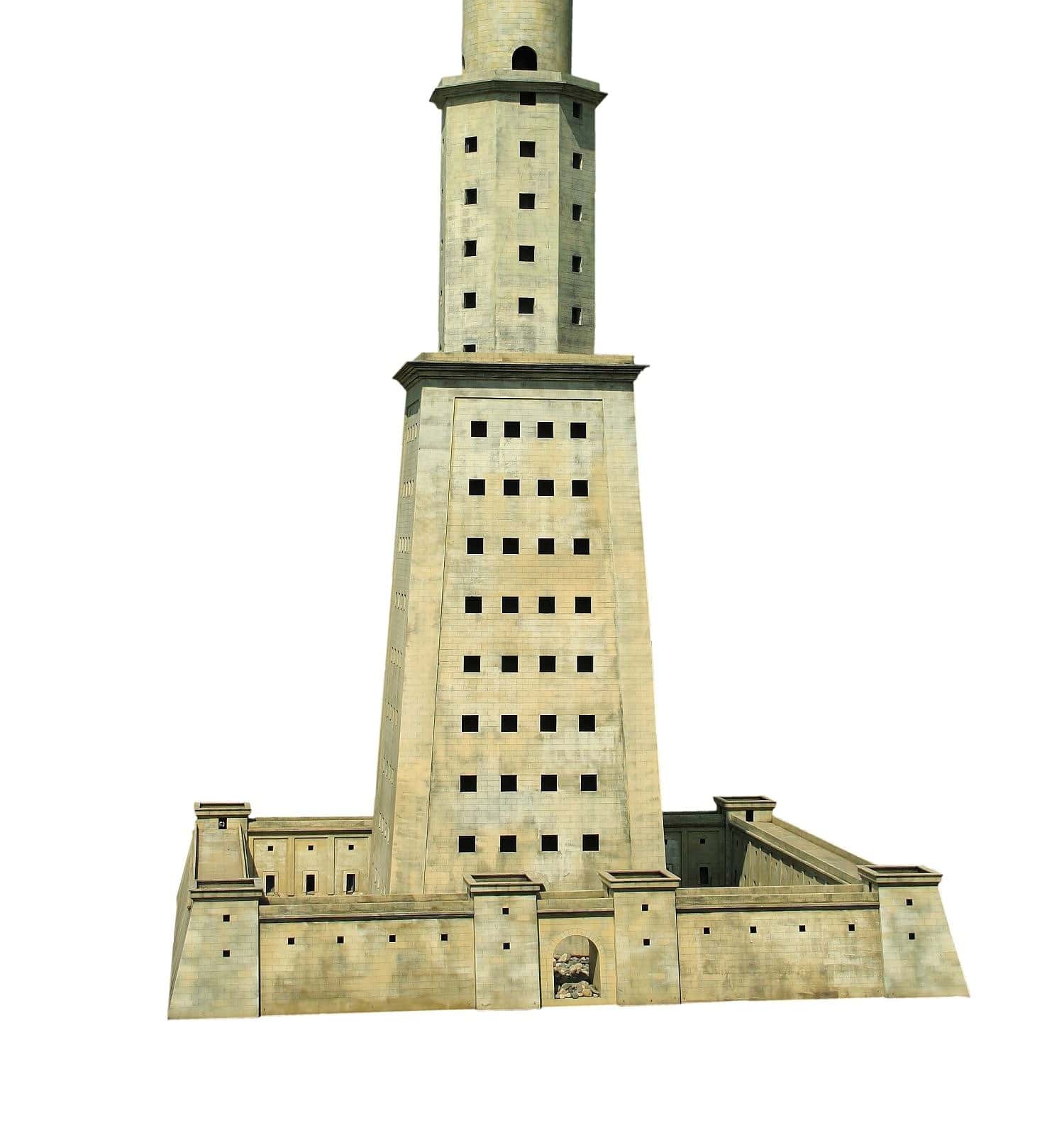
The Lighthouse of Alexandria serves as the blueprint for all modern lighthouses.
©BORTEL Pavel - Pavelmidi/Shutterstock.com
Also referred to as Pharos of Alexandria, the Lighthouse of Alexandria was constructed on the island of Pharos in the harbor of Alexandria. This ancient lighthouse had an incredible impact on architecture, becoming a blueprint for modern lighthouses. The structure likely stood more than 350 feet tall, ranking second in height to only the Great Pyramid of Giza.
Do the 7 Wonders of the Ancient World Exist Today?
Only one of the seven wonders of the ancient world exists today: the Great Pyramid of Giza. Unfortunately, the other six wonders of the ancient world were destroyed either by natural forces, such as earthquakes, or by men. While certain remains belonging to the six ancient wonders can be seen in museums, no structure survives fully intact.
Are There Currently any Wonders of the World?
Since most of the seven wonders of the ancient world no longer exist, scholars have dedicated seven new wonders of the world that prevail into modernity. While many of these wonders are certainly ancient, others were constructed as late as the 20th century. Additionally, the seven new wonders of the world occupy a greater geographic range than the ancient wonders. These new architectural feats can be found in places like Brazil, China, Jordan, and Italy. A few of these wonders include the Great Wall of China, Christ the Redeemer, and the Taj Mahal.
Thank you for reading! Have some feedback for us? Contact the AZ Animals editorial team.








